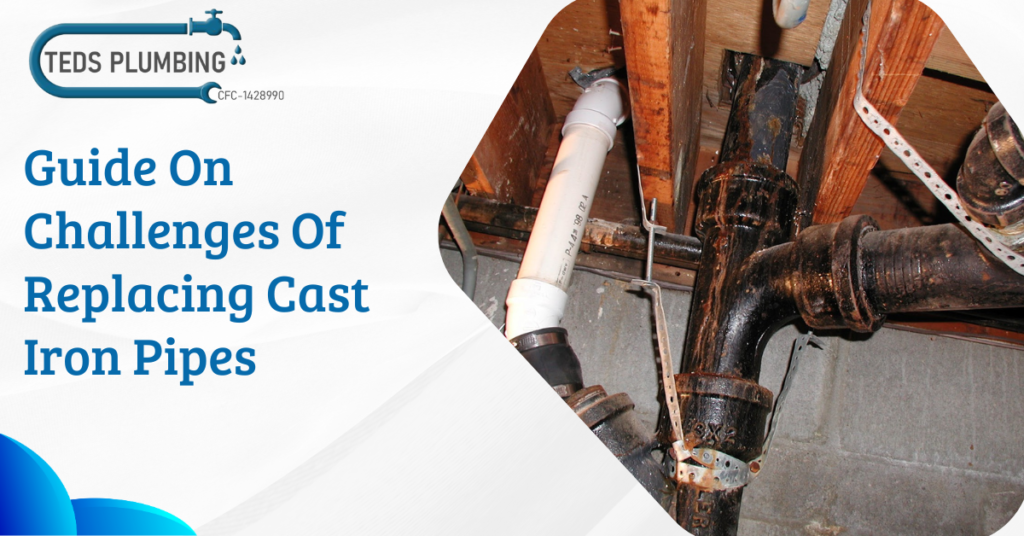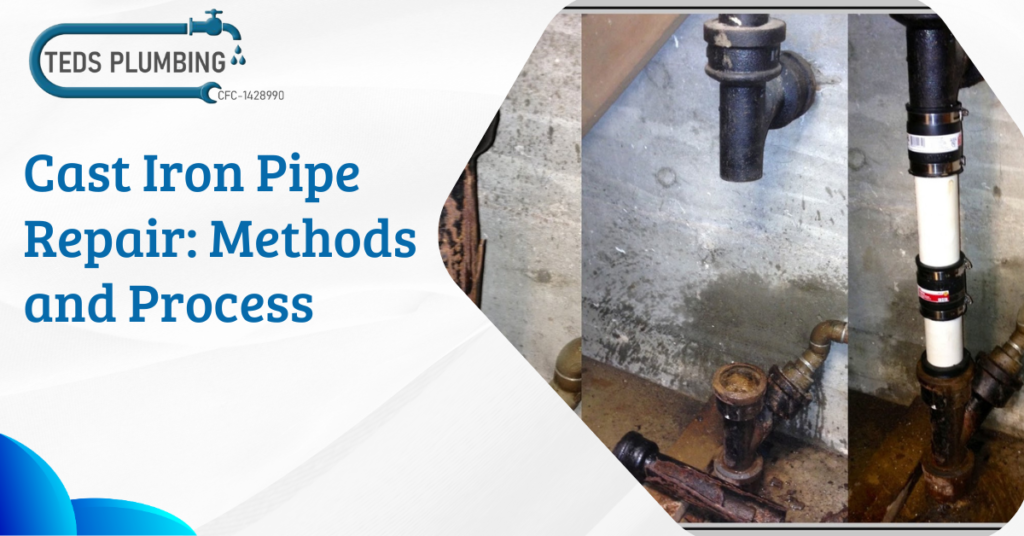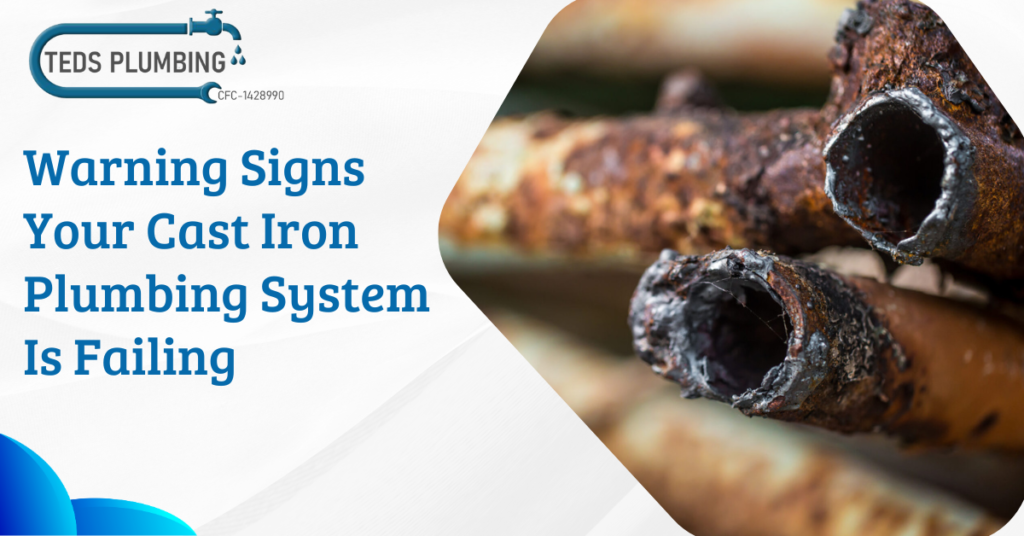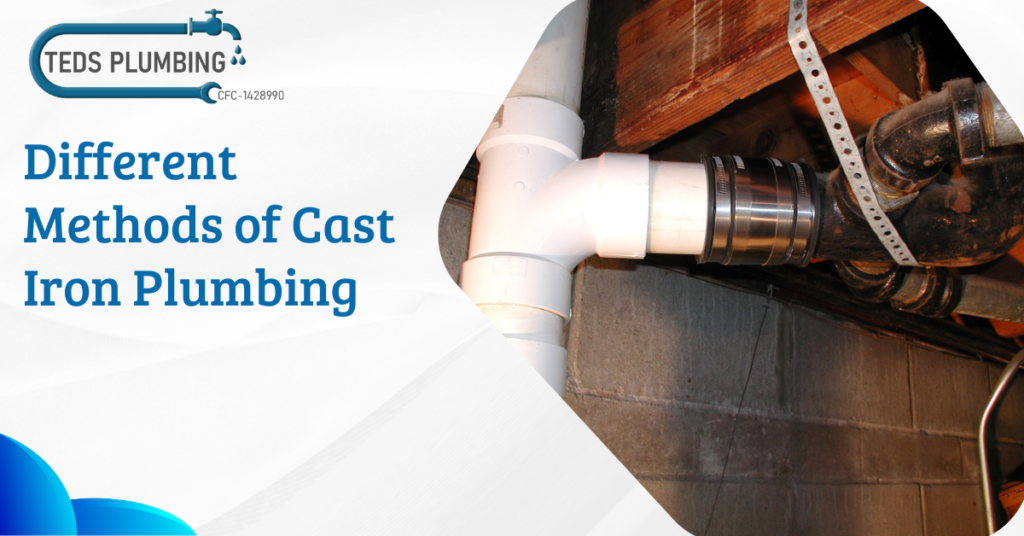The plumbing system is like the backbone of your house. It makes the water flow smoothly and helps the housemates do their chores conveniently. This is why people pay attention to installing a strong system in their homes or offices. However, if you have opted for cast iron for your plumbing system, you might need to replace it immediately. Replacing cast iron pipes comes with its own challenges.
Cast iron was once the most durable and reliable material for installing plumbing fixtures. It was most popular in houses in the 1970s and early 80s. It consists of sturdy iron pipes that maintain the water temperature in hot summers and chilly winters. It also provides an eco friendly environment for water that maintains the quality of the water for a long time.
However, with time it starts showing its side effects. Being a natural material, it is prone to rust and corrosion. It typically lasts 80 to 100 years but starts decaying in the modern era. Rust mixing with drinking water then contaminates and can cause severe health hazards. It also welcomes infestation and mold growth that can eventually cause water damage to your plumbing system and eventually, the foundation of your property.
What Are The Challenges You Can Face While Replacing Cast Iron Pipes?
Replacing Cast iron pipe Plumbing has many challenges or repairing problems. It is difficult to detect the problem without digging into the system which ruins the yard’s beauty or your precious flooring.
Some of the problems you encounter while replacing pipes are as follows.
Cost
Replacing cast iron is the most expensive project today. Repairing a patch or replacing the complete system for a large area will cost you a fortune. Plumbers need special skills to tackle cast iron, so hiring professional plumbers can cost more than hiring standard plumbers. Most insurance companies do not cover cast iron pipes, so you must pay for them out of pocket.
Accessibility
Cast iron was usually installed under the ground, along or behind the wall, or in a hidden location on the property. It is quite challenging to find the exact location of the malfunctioning pipes. You can assess the stench, water damage, and other defects of the faulty pipes, but you cannot find the problem without digging the whole plumbing line.
Asbestos Risk
If your cast iron pipes were installed before 1980, they may contain asbestos. Asbestos is a fibrous toxin that ties up pipes and offers heat and fire resistance properties. Disturbing asbestos can be dangerous, so special precautions and a licensed professional are required for safe removal.
Unforeseen Issues
While changing cast iron pipes, you may also see other problems, such as oozing out from the grounds. Repairing or replacing the system might affect the seals or insulations of your house which will eventually cause water damage. Addressing them with the plumbing line replacement is another challenge.
Disposal of Old Pipes
Properly disposing of old cast iron pipes is another challenge. Due to their weight and size, transportation and disposal can be difficult and there may be environmental regulations governing their disposal. Finding a perfect disposal location and an agency that can do it for you can be challenging.
These are just a few challenges you might find with iron plumbing systems. Despite many benefits repairing or replacing them can be chaotic without causing property damage. Remember to look for signs indicating a change in your cast iron plumbing system and call a professional agency as soon as possible.
Types Of Cast Iron Pipes Used In Your House Or Office
Cast iron pipelines are metallic piping materials that have been in use since the 17th century. It makes them one of the oldest materials used for plumbing lines. These pipes are crafted by melting iron and pouring the molten metal into molds. This process results in a solid and highly durable pipe. There are five types of cast irons. They are
- Grey iron
- White cast Iron
- Ductile Iron
- Wrought Iron
- Mondi Iron
However, cast iron pipes are divided into ductile cast iron pipes and grey cast iron pipes.
Grey Cast Iron Pipes
Grey cast iron pipes are famous for their excellent corrosion resistance and high compressive strength. Their grey appearance is mainly due to graphite flakes in their microstructure. Because they can tolerate external pressure and soil load, they are often used in sewage and underground applications.
Ductile Cast Iron Pipes
Ductile cast iron pipes are also popular as nodular or “ductile iron” pipes. These pipes are a more modern variation of cast iron pipes. They are treated with magnesium to enhance their flexibility and elasticity, making them suitable for various applications, including water distribution and sewer lines. The graphite in the microstructure is spherical, making ductile iron pipes stronger and tougher than grey iron pipes.
Replacing cast iron pipes is a significant project for your home or office. You must be extra careful and consider the perfect alteration for long-lasting results. Most people choose PVC as a reliable solution for their plumbing problems. Remember, your house is a haven for you. Consider installing the proper pipeline that can give you a peaceful life for a long time.
Looking for a company to handle your plumbing problems? Visit Ted’s Plumbing in Fort Lauderdale and leave all your worries behind. You can get a team of experienced Fort Lauderdale plumbers who can handle any plumbing issues with finesse and reliability. To book your appointment, visit our website today.
FAQs
What are the types of cast iron pipelines?
There are two types of cast iron pipes: grey and ductile. Grey and ductile were the most common pipes in houses in the 1970s and 1980s.
What other alternatives can you opt for for your plumbing system?
You can install your plumbing pipes from PVC, copper, stainless steel, or Chlorinated Polyvinyl Chloride (CPVC).
Why do you need to replace your plumbing pipes?
You must replace your plumbing fixtures when you detect leakage, stench, damp places, and faulty taps in your house or office.




